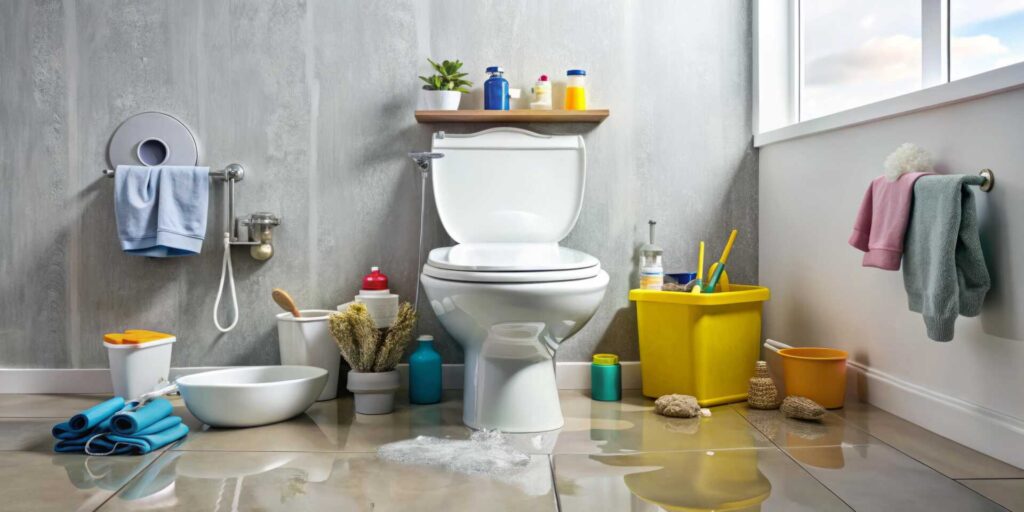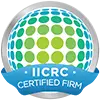
Contents
A clean home feels safe, but a sewage backup can shatter that sense of security. When faced with this unpleasant situation, it’s vital to act quickly and efficiently to minimize damage and health risks. Understanding the right steps to take can make all the difference. From safety precautions to cleanup techniques, knowing what to do next is important for every property owner facing this challenge. What steps should you prioritize first?
Key Takeaways
- Wear protective gear, including gloves and masks, to safeguard yourself from harmful pathogens during cleanup.
- Quickly remove standing water and bag contaminated items to minimize damage and health risks.
- Sanitize affected surfaces with disinfectants to eliminate harmful bacteria and prevent mold growth.
- Contact professionals for efficient cleanup and to handle hazardous materials safely.
- Implement preventive measures, such as regular plumbing maintenance and installing backflow valves, to avoid future backups.
Assess the Situation Immediately
When you discover a sewage backup, you must assess the situation immediately to determine the severity of the issue.
Start with an initial assessment of the affected area. Look for visible signs of overflow, such as water pooling on the floor, and note any unpleasant odors. This evaluation helps you understand the extent of the damage and whether it’s localized or widespread.
Next, check for potential sources of contamination, like broken pipes or blocked drains.
Evaluate the materials affected—carpets, walls, and furniture may need different treatments.
Document your findings, as this information will be significant for insurance claims or professional remediation.
Prioritize Safety Measures
When dealing with a sewage backup, your safety should be the top priority.
Always wear protective gear, such as gloves and masks, to shield yourself from harmful pathogens.
Additionally, isolate contaminated areas to prevent exposure to others and minimize health risks.
Wear Protective Gear
Protecting yourself during a sewage backup cleanup is vital for your health and safety. Wearing appropriate protective clothing and safety equipment helps minimize your risk of exposure to harmful pathogens and contaminants.
| Type of Gear | Purpose |
|---|---|
| Gloves | Protects hands from contaminants |
| Masks | Prevents inhalation of harmful particles |
| Waterproof Boots | Keeps feet dry and protected |
Before starting the cleanup, make sure you’re equipped with durable gloves, a mask, and waterproof boots. These items are essential in preventing direct contact with sewage and reducing the likelihood of infection. Prioritizing your safety safeguards your health and allows you to clean effectively and confidently.
Isolate Contaminated Areas
After putting on your protective gear, the next step is to isolate contaminated areas to prevent further exposure and cross-contamination.
Identify contamination sources, such as sewage spills or flooding, and act quickly. Close off affected rooms using barriers like plastic sheeting to keep contaminants contained. Clearly mark these areas with warning signs to alert others.
Utilize isolation strategies, such as turning off ventilation systems, to avoid spreading harmful pathogens through air circulation. Confirm that only trained personnel enter these zones, minimizing risk.
Contain the Affected Area
To effectively contain the affected area after a sewage backup, start by shutting off utilities to prevent further damage or hazards.
Next, block any openings and vents to limit the spread of contaminants.
Finally, use clear warning signs to alert others of the danger, ensuring safety for everyone involved.
Shut Off Utilities
Before you begin any cleanup efforts, it is crucial to shut off utilities in the affected area to prevent further damage and ensure safety. This step is critical in utility management and should be part of your emergency procedures. By shutting off water, gas, and electricity, you minimize risks associated with sewage exposure.
| Utility Type | Action Required | Importance |
|---|---|---|
| Water | Shut off the supply line | Prevents additional flooding |
| Gas | Turn off the circuit breaker | Reduces explosion risk |
| Electricity | Turn off circuit breaker | Ensures safety from shocks |
Taking these actions protects your property and provides peace of mind as you navigate cleanup efforts.
Block Openings and Vents
Blocking openings and vents is essential for containing the affected area during a sewage backup. By doing this, you minimize the risk of contaminants spreading throughout your property.
Implementing effective block prevention methods can greatly improve your response. Here are some vent maintenance tips and strategies to keep in mind:
- Seal off any floor drains with plastic wrap or duct tape.
- Use towels or rags to block gaps around doors and windows.
- Close all windows to prevent air circulation.
- Verify that vents are covered with mesh or filters.
- Regularly inspect and maintain all plumbing vents.
Taking these steps protects your space and fosters a sense of community responsibility in safeguarding your environment.
Use Warning Signs
When a sewage backup occurs, using warning signs effectively can greatly contain the affected area and prevent further contamination.
Start by placing visible warning signs around the impacted zone to alert everyone of the potential hazard. This encourages vigilance and minimizes accidental contact with contaminated materials.
Early detection is essential; if you notice unusual odors or water pooling, act fast. Inform your neighbors about the situation, fostering a community approach to safety.
Make sure to secure the area with barriers, keeping pets and children away.
Remember, proper signage protects your property and reinforces a culture of awareness among those around you.
Wear Appropriate Protective Gear
Since sewage backups can expose you to harmful pathogens and toxic substances, wearing appropriate protective gear is essential for your safety.
Don’t underestimate the risks involved; proper gear can greatly reduce your chances of infection or injury.
Here’s a list of items you should consider:
- Heavy-duty protective clothing to shield your skin
- Safety goggles to protect your eyes from splashes
- Rubber gloves to keep your hands safe from contaminants
- Respirators to filter out harmful airborne particles
- Waterproof boots to prevent exposure to contaminated water
Equipping yourself with the right protective gear safeguards your health and gives you the confidence to tackle the cleanup process effectively.
Remember, you’re not just protecting yourself; you’re also ensuring a safer environment for others.
Prioritize your safety to address the situation responsibly and efficiently.
Remove Contaminated Materials
After ensuring you’re properly protected, the next step is to remove contaminated materials from the affected area.
Start by identifying items that can’t be salvaged, such as carpets, rugs, and upholstery. These materials harbor bacteria and other pathogens, making contaminated material disposal essential for your safety. Carefully bag these items, sealing them securely to prevent any leakage.
Next, focus on hard surfaces like floors and walls. Use a suitable disinfectant to clean and sanitize these areas thoroughly.
Follow sanitation procedures recommended by health authorities to eliminate any lingering contaminants. If you encounter any porous materials that can’t be cleaned, consider their removal as well.
Contact Professional Cleanup Services
Although you may feel inclined to tackle the sewage backup on your own, contacting professional cleanup services is often the most effective solution.
These experts bring specialized knowledge and equipment, ensuring a thorough and safe cleanup process. The cleanup benefits of hiring professionals extend beyond just getting the job done right; they also protect your health and property.
Here are some key reasons to evaluate professional services:
- Expertise: Trained personnel handle hazardous materials safely.
- Advanced Equipment: Professionals use industrial-strength tools for efficient cleanup.
- Time-Saving: They can complete the job faster than you might on your own.
- Preventative Measures: Experts can identify and address potential issues to prevent future backups.
- Insurance Support: Many services assist with claims, easing the financial burden.
In short, opting for professional cleanup services ensures a thorough, effective response to sewage backups, prioritizing your safety and peace of mind.
Review
In the aftermath of a sewage backup, acting swiftly is your best defense against potential hazards. Think of your property as a ship; if you don’t patch the leaks, it’ll sink. By evaluating the situation, prioritizing safety, and enlisting professional help when needed, you can navigate through this crisis effectively. Remember, prevention is the best course—install backflow valves and schedule regular plumbing inspections to keep your ship sailing smoothly and avoid future storms.
Recent Posts
Swift Solutions for Unwanted Waste Woes
Imagine a foul odor creeping through your home, signaling a sewage backup that disrupts your
Why Effective Cleanup Matters for Homeowners
As a homeowner, effective cleanup is essential for protecting your property and maintaining its value.
Top Methods for Home Waste Cleanup
Like a well-prepared firefighter tackling a blaze, you must approach home waste cleanup with strategy




